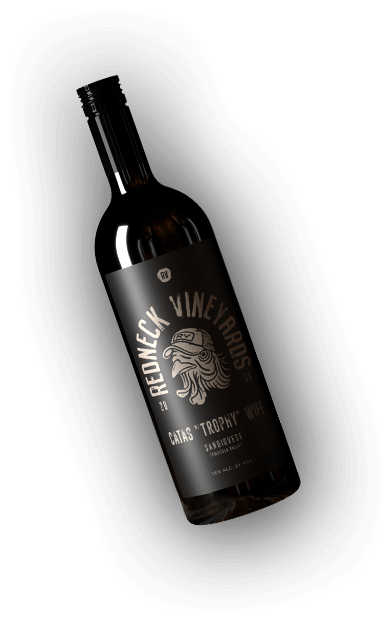Wine, Wine Tasting
Wine Buying Guide
Whether you’re new to wine or are trying to branch out from your favorite red or white, you might wonder where to start. What’s the best way to find a wine you’ll love when you don’t have time to go to wine tastings? One option is to read wine buying guides like this one to get quick tips on finding your new favorite vino! Feel free to use this guide for buying wines if you want the best chance of discovering a drink you can enjoy. These tips will help get you started.
Find a Wine That Features Your Favorite Flavors
One of the best ways to tell what wine you’ll love is what kind of flavor it has. Unlike some types of alcohol, you’re encouraged to sip and savor wine, not just throw it back and immediately follow it with a chaser. And that means you need to find a wine that has a flavor that genuinely tastes good to you.
Fortunately, most wine labels proudly list the most prominent flavors, which should help when you have to choose from a small selection of wines to try. But you can’t exactly go around a grocery store or even a wine specialty store reading every wine bottle’s label until you find something that sounds good.
That’s why you should use this guide for buying wines as a cheat sheet for finding a wine you’ll enjoy. The easiest way to get started is to think about what kinds of fruits and other foods you like.
Common Red Wine Flavors
In general, if you like berries — from raspberries and blackberries to strawberries — you’ll find a red wine you like. This is because most red wines feature one or more of these fruits as part of the flavor.
Granted, they often also boast of flavors other than fruit, such as cinnamon, vanilla, licorice, cloves, coffee, leather, smoke, or chocolate. But generally, you’ll find at least one berry mentioned in most red wine descriptions.
Common White Wine Flavors
On the other hand, if you prefer citrus flavors and even floral notes, you’ll likely prefer white wine. As you’ll read in most wine buying guides, white wine tends to be crisp and refreshing, especially given that it’s best to drink them chilled.
When you read white wine labels, you’ll usually see a light, refreshing citrus fruit mentioned, such as lime, lemon, orange, or grapefruit. You might also see peach, apple, pear, apricot, mango, or similar fruits listed.
In addition, some white wines feature interesting flavors that aren’t fruit, like honey, herbs, or floral aromas. A few popular floral notes include rose, jasmine, and honeysuckle. If these flavors appeal to you, you’ll probably gravitate toward white wine.
Another way to narrow down your favorite wine is to consider whether you prefer grapefruit juice or apple juice. If you like grapefruit juice more than apple juice, look for a dry white wine. If you prefer apple juice, a sweeter white wine would likely suit you.
What Are You Planning to Pair Your Wine With?
Another way wine buying guides like this one can help with your decision is by letting you know which wines pair with which foods. You can easily boost the flavor of any dish by pairing it with the right wine. That’s why you should improve your next dinner party by using this guide for buying wines to learn food and wine pairing basics.
For example, if you’re serving chicken or fish, a dry white wine like Chardonnay will typically complement the flavors best. If you’re serving a charcuterie board with cured meats, cheese, and desserts, then a fruity white wine — like Riesling — would pair well.
On the other hand, if you’re grilling burgers or steak for dinner, red wine is usually best. More specifically, a bold, full-bodied red wine like Merlot or Cabernet Sauvignon is typically ideal to serve with rich dishes, including most meat.
As you read this guide for buying wines, check out these popular wine and food pairings to get an idea of what wine to try with each food, including dessert:
- Chardonnay: Salmon, chicken, turkey, pork, brie, camembert, creamy pasta
- Pinot Grigio: Halibut, trout, scallops, crab, salad, mozzarella, crème brûlée
- Riesling: Sushi, chicken, crab, blue cheese, apple pie, cheesecake
- Sauvignon Blanc: Oysters, smoked salmon, pork, gouda, zucchini, brussels sprouts
- Moscato: Fish, crab, flank steak, goat cheese, zesty salad, key lime pie, sorbet
- Sparkling wine: Soft or hard cheese, fish, vegetables
- Cabernet Sauvignon: Steak, burgers, lamb, barbecue chicken, chocolate cake
- Chianti: Steak, burgers, veal, tomato-based pasta
- Pinot Noir: Roast duck, roast pork, lamb, mushroom, pizza, dark chocolate
- Merlot: Chicken, duck, lamb, dark chocolate, chocolate truffles
- Rosé: Cheesy dishes, fish tacos, cured meats, roasted vegetables
What Are the Most Popular Wines?
Another way to use wine buying guides to find your next favorite drink is to get an idea of the most popular wines. There are some options that are popular for a reason, as they’re known for being easy to sip and enjoy.
First, note that experts in many wine buying guides have said white wine is usually a favorite among new wine drinkers. In particular, sweet white wine is a good place to start, as most people find it light and easy on the palate. Some of the most popular white wines to try include:
- Pinot Grigio
- Moscato
- Riesling
- Sauvignon Blanc
These white wines are considered light-bodied, crisp, and sweet. Basically, they’re perfect for a warm day when you want a refreshing, chilled drink to cool off with. As you get used to wine, you can slowly move to slightly drier options that are medium or full-bodied, like Chardonnay from Sweet Oaks.
You can also try out red wines, starting with the simplest options considered light-bodied. According to the typical guide for buying wines, some of the most popular reds for beginners include:
- Pinot Noir
- Syrah
- Merlot
- Zinfandel
You can get started on getting your palate used to red wine by ordering Sweet Oaks 2016 Zinfandel, or Never a Dull Moment 2018 Pinot Noir. As you get used to the flavors of these red wines, you might eventually move on to bold, full-bodied options, like Cabernet Sauvignon or Malbec.
If you’re ready to find your new favorite wine, take a look at our selection of wines from Temecula Valley. You can also get a variety of wines sent to your doorstep when you join a Sweet Oaks wine club!



